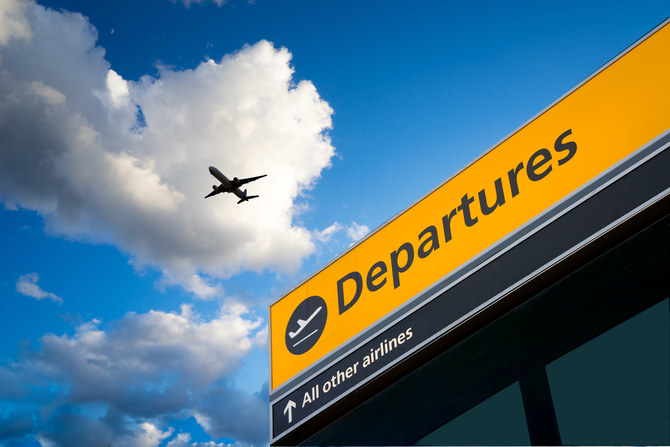Dubai International Airport (DXB), a major aviation hub, has undergone significant transformation in its revenue generation strategies. Traditionally known for its role as a critical transit point, DXB has successfully diversified its revenue streams, turning itself into a leading global airport not only in passenger traffic but also in innovative revenue management. This case study delves into the strategies employed by Dubai Airport to enhance its revenue, their impact, and comparative analysis with other leading airports.
Background of Dubai Airport

Dubai International Airport, located in Dubai, United Arab Emirates, is one of the world’s busiest airports in terms of international passenger traffic. It serves as a crucial transit hub for travelers connecting between Europe, Asia, Africa, and the Americas. Historically, the airport’s revenue largely stemmed from aeronautical charges—fees and charges levied on airlines for using the airport’s facilities.
Transformation in Revenue Streams
The transformation of Dubai Airport’s revenue streams can be categorized into several key strategies:
- Non-Aeronautical Revenue Diversification
Dubai Airport recognized the need to diversify its revenue beyond traditional aeronautical sources. The primary focus was on non-aeronautical revenue streams such as retail, food and beverage, and advertising.
Retail and Duty-Free Operations
DXB has invested significantly in its retail and duty-free offerings. The airport boasts a wide range of high-end shops and duty-free outlets. Strategic partnerships with global brands and luxury retailers have turned Dubai Airport into a shopping destination in its own right. The expansion of retail space and the introduction of exclusive product ranges have contributed significantly to revenue.
Food and Beverage (F&B) Offerings
The food and beverage sector at DXB has seen remarkable growth. The airport has diversified its F&B options, catering to a variety of tastes and preferences. From fast food to gourmet dining experiences, the airport offers an extensive array of choices. The inclusion of renowned global and local brands has enhanced passenger satisfaction and increased revenue.
Advertising Revenue
Dubai Airport has capitalized on its high footfall to generate substantial advertising revenue. Innovative advertising solutions, including digital displays and interactive installations, have attracted numerous brands looking to reach a global audience.
- Enhanced Passenger Services
DXB has invested in enhancing passenger experience, which indirectly boosts revenue. Key areas include:
Lounge Services
The introduction of premium lounges and the expansion of existing ones have improved the passenger experience. Lounges offer a range of services, including dining, relaxation, and business facilities, providing a significant revenue stream through entry fees and memberships.
VIP and Concierge Services
Personalized services such as VIP and concierge offerings cater to high-net-worth individuals and premium passengers. These services provide additional revenue and enhance the overall airport experience.
- Real Estate and Infrastructure Development
Dubai Airport has strategically developed its real estate and infrastructure to create new revenue avenues.
Airport City Development
The creation of Airport City, a commercial and business hub adjacent to the airport, has generated substantial revenue through leasing commercial spaces and attracting international businesses.
Hotel and Hospitality Services
The construction of hotels and hospitality services within or near the airport has added to the revenue streams. These facilities cater to transit passengers and contribute to the airport’s overall profitability.
Impact of Revenue Transformation
The transformation in revenue streams has had a profound impact on Dubai Airport:
- Financial Performance
The diversification of revenue sources has strengthened Dubai Airport’s financial position. Non-aeronautical revenues now constitute a significant portion of the total revenue, providing a buffer against fluctuations in passenger traffic and aviation-related income.
- Passenger Experience
Enhancements in services and facilities have led to improved passenger satisfaction. A better airport experience has translated into increased dwell time, which boosts spending in retail and F&B outlets.
- Competitive Positioning
The strategic diversification has positioned Dubai Airport as a leader in the global aviation industry. The airport’s ability to generate substantial non-aeronautical revenue has set a benchmark for other airports to follow.
Comparative Analysis with Other Leading Airports
To understand the effectiveness of Dubai Airport’s revenue transformation, it is essential to compare it with other major airports worldwide. Below is a comparative analysis of Dubai Airport with London Heathrow and Singapore Changi Airport.
Comparative Table: Revenue Streams
| Revenue Stream | Dubai Airport (DXB) | London Heathrow (LHR) | Singapore Changi (SIN) |
|---|---|---|---|
| Retail | High-end shops, luxury brands | Diverse retail outlets | Wide range of retail options |
| Duty-Free | Extensive duty-free shopping | Large duty-free selection | Premium duty-free offerings |
| Food & Beverage | Wide variety of international F&B | Extensive F&B options | Diverse F&B options |
| Advertising | Digital displays, interactive ads | Traditional and digital ads | Innovative digital advertising |
| Lounge Services | Premium and VIP lounges | Multiple premium lounges | Multiple lounges, including premium |
| Real Estate | Airport City, commercial spaces | Business parks | Integrated commercial spaces |
| Hotels | Hotels adjacent to the airport | Nearby hotels | Airport hotels and amenities |
Analysis Table: Financial Performance and Passenger Experience
| Metric | Dubai Airport (DXB) | London Heathrow (LHR) | Singapore Changi (SIN) |
|---|---|---|---|
| Total Revenue | High due to non-aeronautical sources | Moderate, reliant on aeronautical fees | High due to diversified sources |
| Non-Aeronautical Revenue | Significant portion | Moderate | High |
| Passenger Satisfaction | High, due to enhanced services | High, due to extensive facilities | Very high, known for excellence |
| Competitive Edge | Strong, with diverse offerings | Strong, with traditional strength | Very strong, innovative services |
Conclusion
Dubai Airport’s transformation of its revenue streams is a testament to its strategic vision and innovative approach. By diversifying beyond traditional aeronautical revenues, enhancing passenger services, and investing in real estate, DXB has set a new standard in airport revenue management. The comparative analysis highlights Dubai Airport’s leading position in global airport revenue generation, underscoring the success of its transformation strategies. This case study serves as an insightful example for other airports aiming to diversify and optimize their revenue streams.











